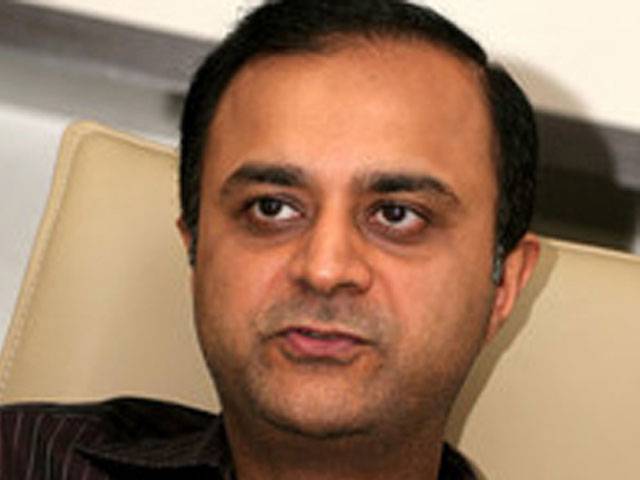LAHORE - If cement sector is excluded from MRP and included in normal tax regime, the rate of cement will be reduced at least by Rs10 per 50kg bag.
This was observed by the All Pakistan Cement Manufacturers Association Chairman Muhammad Ali Tabba while talking to The Nation.
He pointed out that collapse of railway is another reason for the hike in cement price and its revival can also save more than Rs10-15 per bag of cement as escalating transportation cost has put the industry in trouble.
“If government eliminates Rs 400 per ton excise duty on cement an additional cut of Rs20 per bag will be possible. Hence, removal of heavy taxation’s burden and easy and low-cost transportation can lower the rate of cement bag by up to Rs.50,” he analyzed.
The APCMA Chairman attributed lower cement consumption to higher taxes imposed in the budget and increase in transportation charges due to strict compliance of axle load restrictions on the coal carriers.
“In August, last year, power tariff for industrial consumers was increased to Rs. 15.31 from Rs. 10.51 per unit, ie, by almost 46pc. The Time-Of-Day rate was increased by 35pc to Rs. 18.81 from the current rate of Rs. 13.99 per unit while off-peak rate of this category was jumped up by 62pc to Rs. 13.31 from Rs. 8.22 per unit.
Whereas, the Pak Rupee has been depreciating continuously and it is presently around Rs. 105.50 per US dollar. Due to axle load implementation, there has been an increase of around Rs. 1,000-Rs 1,500 per ton in the cost for transportation of coal from Karachi to upcountry depending on the location and distance to destination.”
The cement industry leader maintained that different cost push increase have been witnessed ranging from axle load limitation, budgetary measures, gas & electricity tariff hike; which the industry has only partially passed on.
He said the biggest hit coming from the cost side is the hike in electricity tariff and the abnormal devaluation of PKR witnessed in the 1Q FY14, while interest rates are also on the uptrend.
It is also important to mention that during the federal budget 2013-14, cement industry was brought within the purview of ‘third Schedule’ which has increased the overall tax burden and has already resulted in increase in the local prices.
“Industry has approached the government to reconsider its decision, remove it from third Schedule and put in the normal sales tax regime. This will help industry to reduce prices which will help to accelerate construction activities across the country.”
To a question regarding trade with neighboring country, he stated that India’s own cement production and capacity have enhanced tremendously resulting into drop in price of cement.
Muhammad Ali Tabba, the Chief Executive of Lucky Cement Limited, said that export options are diminishing with Afghanistan facing uncertainties after the withdrawal of Nato forces in 2014 while the Indians are in no mood to remove barriers to cement exports.
He said that Africa, Sri Lanka, Iraq and Afghanistan are principal markets for cement export from Pakistan. Due to US sanctions on Iran and devaluation of Iranian currency, surplus Iranian capacity has posed direct threat to Pakistani cement in these two markets.
Regarding increasing sale of Iranian cement in Afghanistan, the traditional market of Pakistan, he said that Iranian govt gives subsidy on oil, gas and electricity to its industry due to which their cement is very competitive.
“We are spending $800 per ton for oil while Iranian industry spends only $150 per ton. Our 70 percent cost consists of energy needs.”
Muhammad Ali Tabba also flayed continuous cut in PSDP allocation which also causes drop in GDP growth, resulting in very low growth.
Thursday, April 18, 2024
Rail collapse also a reason for cement rates hike
APCMA Chairman says cement inclusion in ‘Third Schedule’ raises overall tax burden

Caption: Rail collapse also a reason for cement rates hike
Fourteen-member Balochistan cabinet to take oath tomorrow, says spox
9:36 PM | April 18, 2024
'That'll be awesome,' Rohit Sharma on idea of Pakistan vs India Test series
9:17 PM | April 18, 2024
President summons Senate session on April 22
9:07 PM | April 18, 2024
Turkish top general calls on CJCSC Sahir Shamshad Mirza
9:06 PM | April 18, 2024
Filling superior courts' vacancies top priority: CJP
9:05 PM | April 18, 2024
Hepatitis Challenge
April 18, 2024
IMF Predictions
April 18, 2024
Wheat War
April 18, 2024
Rail Revival
April 17, 2024
Addressing Climate Change
April 17, 2024
Justice denied
April 18, 2024
AI dilemmas unveiled
April 18, 2024
Tax tangle
April 18, 2024
Workforce inequality
April 17, 2024
New partnerships
April 17, 2024
ePaper - Nawaiwaqt
Advertisement
Nawaiwaqt Group | Copyright © 2024





